Learn about the best lupine companion plants to help this lovely perennial plant thrive. Get a list of the best companion plants you can surround your lupine with, including the best flowers to grow as companion plants for lupine, the best fruit to plant around lupine, the best herbs to plant with lupine, and the best vegetables to plant with lupine. Also get ideas about which plants to avoid planting near lupine. You will also learn about the best time to plant lupine, the best place to plant lupine the best fertilizer for lupine, and the watering needs of lupine.
This post contains affiliate links, which means I may earn a small commission from qualifying purchases at no additional cost to you. Please read my Policies page for more information.
Table of Contents
Why Lupine is One of My Favorite Plants
I’ve been surrounded by lupine for decades, as it grows in the wild where I live in Pacific Northwest garden USDA Plant Hardiness Zone 8. I was first inspired to grow lupine years ago after reading the wonderful book Miss Rumphius, by Barbara Cooney. If you are not familiar with the title, it is a beloved fictional children’s book that tells the story of Alice Rumphius, known as the Lupine Lady. The book follows Alice’s journey to make the world more beautiful, just as her grandfather had advised. She travels to far-off places, settles by the sea, and fulfills her promise by spreading lupine seeds across the landscape.
In addition to inspiring me to plant lupines, this book became a favorite book to read aloud to my elementary students and my children. It offers valuable lessons about the importance of making a positive impact on the world and leaving behind a legacy of beauty and kindness. I encourage you to find a copy of this uplifting book and add it to your collection.
Another reason lupine is a favorite of mine is because it fits in well with the purple, blue, and pink color palette in my perennial garden. If you are looking for an attractive addition to your perennial plant collection, read on to learn how simple it is to grow lupine in your garden. Learn about planting, growing, and harvesting seeds from lupine, plus get a handy printable chart listing companion plants for lupine as well. Let’s get started!
What Makes a Good Companion Plant?
Why pay attention to companion plants? A good companion plant is one that offers various benefits to its neighboring plants, such as minimizing pest and disease issues, which helps enhance their growth, health, and overall productivity. Here are some key qualities that make a good companion plant that will help you plant strategically to make the most of your yard or garden space:
Pest Control: Companion plants may repel pests or attract beneficial insects that prey on pests, helping to reduce pest damage without the need for chemical pesticides.
Pollinator Attraction: Plants that attract pollinators such as bees, butterflies, and hummingbirds can improve pollination and fruit set in neighboring plants, leading to higher yields.
Soil Improvement: Some companion plants have deep roots that help break up compacted soil, while others fix nitrogen or add organic matter to the soil, improving soil fertility and structure for neighboring plants.
Complementary Growth Habits: Companion plants with different growth habits, such as tall plants providing shade for shorter ones or ground covers suppressing weeds, can maximize space and resources in the garden.
Disease Resistance: Certain companion plants may emit chemicals or compounds that inhibit the growth of pathogens or pests, reducing the risk of disease in neighboring plants.
Seasonal Considerations: Companion plants that thrive during different seasons can provide continuous benefits throughout the year, such as early bloomers attracting pollinators or cover crops protecting soil during the off-season.
Aesthetic Value: Companion plants with attractive foliage, flowers, or fruits can enhance the visual appeal of the garden while providing practical benefits to neighboring plants.
Lupine Companion Plants: Flowers
There are many options for good companion flowers for lupine, both annuals and perennials.
Annuals
Here are some annual flowers that will enhance the growth of lupine:
Calendula: Calendula attracts beneficial insects like ladybugs and lacewings, which prey on aphids and other harmful insects that might affect lupines.
Cosmos: Cosmos attract pollinators like bees and butterflies, which can help increase lupine pollination and yield.
Marigolds: Marigolds repel certain pests like aphids and nematodes, which can protect lupines from damage.
Nasturtiums: Nasturtiums serve as trap crops, attracting aphids away from lupines and acting as sacrificial plants.
Sunflowers: Sunflowers provide shade and support for lupines, and their large flowers attract a wide range of pollinators.
Sweet Alyssum: Sweet Alyssum attracts hoverflies, whose larvae feed on aphids, helping to keep lupines pest-free.
Zinnias: Zinnias attract pollinators and beneficial insects, enhancing the overall biodiversity in the garden and promoting lupine health.
Perennials
Lupines can make excellent companions for perennial flowers, providing them with nitrogen-rich soil and attracting pollinators. Here are some great perennial flower options:
Black-eyed Susans (Rudbeckia): These cheerful yellow flowers thrive in sunny conditions and attract pollinators. Lupines improve soil quality, providing black-eyed Susans with the nutrients they need for vigorous growth and abundant blooms.
Blanket Flowers (Gaillardia): Blanket flowers are known for their vibrant, daisy-like blooms that attract butterflies and bees. Lupines enrich the soil with nitrogen, supporting the robust growth and long-lasting blooms of blanket flowers.
Coneflowers (Echinacea): Coneflowers are drought-tolerant and attract pollinators like bees and butterflies. Lupines enhance soil fertility, creating an optimal growing environment for coneflowers and boosting their resilience.
Lupine Companion Plants: Fruit
As previously noted, lupine is a legume that enriches the soil with nitrogen, making it beneficial for companion planting with various fruits. Here are some excellent companion fruit options:
Apple Trees: Lupines help fix nitrogen in the soil, which benefits apple trees by providing them with the essential nutrient they need for healthy growth and fruit production.
Blueberries: Lupines can improve soil structure and fertility, creating ideal conditions for blueberries, which prefer acidic soil. Additionally, lupines’ tall stature can provide some shade and protection for blueberry bushes.
Peach Trees: Lupines improve soil health by adding nitrogen, which is essential for peach tree growth and fruit development. Additionally, lupines’ deep root system can help improve soil drainage, which benefits peach trees.
Raspberries: Lupines’ nitrogen-fixing properties enhance soil fertility, which can lead to healthier raspberry plants and higher yields of delicious berries.
Strawberries: Lupines attract pollinators like bees and butterflies, which can benefit strawberry plants by increasing pollination rates and fruit yield. Plus, the nitrogen-fixing abilities of lupines improve soil quality for strawberries.
Lupine Companion Plants: Herbs
Lupines can be beneficial companions for herbs, providing them with nitrogen-rich soil and attracting beneficial insects. Here are some great herb options:
Chives: Chives are easy-to-grow herbs that produce edible leaves and attractive purple flowers. Lupines enrich the soil with nitrogen, supporting the growth of healthy chive plants and enhancing their flavor.
Lavender: Lavender is prized for its fragrant foliage and flowers, which attract pollinators like bees and butterflies. Lupines contribute nitrogen to the soil, promoting vigorous growth and abundant blooms in lavender plants.
Rosemary: Rosemary is a Mediterranean herb that thrives in well-drained soil and full sun. Lupines enhance soil fertility by fixing nitrogen, providing rosemary with the nutrients it needs to grow vigorously and produce flavorful leaves.
Sage: Sage is a drought-tolerant herb with aromatic leaves that are used in cooking and herbal medicine. Lupines improve soil fertility, providing sage plants with the nutrients they need to thrive and enhancing their flavor.These herbs benefit from lupines’ nitrogen-fixing abilities, which promote healthy growth and flavorful foliage.
Thyme: Thyme is a low-growing herb with aromatic foliage and tiny flowers that attract pollinators. Lupines improve soil quality, creating an ideal growing environment for thyme and helping it thrive in the garden.
Lupine Companion Plants: Vegetables
The following vegetables benefit from lupines’ ability to fix nitrogen in the soil, which enhances fertility and overall plant health. Additionally, lupines attract pollinators, which can improve pollination rates and increase vegetable yields in the garden. Here are some great vegetable options:
Cucumbers: Cucumbers appreciate fertile soil for optimal growth and fruit development. Lupines enrich the soil with nitrogen, providing cucumbers with the nutrients they need to thrive and produce a bountiful harvest.
Lettuce: Lupines improve soil fertility, creating ideal growing conditions for lettuce. The nitrogen-rich soil promotes healthy leaf growth, resulting in crisp and flavorful lettuce leaves for salads and sandwiches.
Peppers: Peppers, like tomatoes, thrive in nitrogen-rich soil provided by lupines. The increased soil fertility can lead to healthier pepper plants and higher yields of peppers.
Tomatoes: Tomatoes benefit from lupines’ nitrogen-fixing abilities, which promote healthy foliage growth and robust fruit production. Additionally, lupines attract pollinators like bees, which can improve tomato pollination and yield.
What Not to Plant Near Lupine
While lupines can be beneficial companions for many plants, there are a few that are not recommended to plant alongside them due to potential competition or compatibility issues. Here are some plants you should avoid planting with lupines:
Brassicas: Brassicas, such as cabbage, broccoli, and kale, have different soil requirements than lupines. Lupines prefer slightly acidic soil, while brassicas prefer neutral to slightly alkaline soil. Additionally, brassicas may compete with lupines for nutrients in the soil.Potatoes:
Other legumes: Planting too many legumes together can lead to excessive competition for nutrients, particularly nitrogen. It’s best to rotate lupines with other types of vegetables or plants to maintain soil balance.
Potatoes are heavy feeders and may compete with lupines for nutrients in the soil. Additionally, potatoes prefer well-drained soil, while lupines thrive in soil with good moisture retention. Planting them together may lead to uneven growth or nutrient deficiencies.
Shrubs or trees with shallow root systems: Lupines have deep root systems that can compete with shallow-rooted plants, such as some shrubs or trees. Planting lupines too close to these shallow-rooted plants may lead to competition for water and nutrients, potentially causing stress or stunted growth.
A common example of a shrub or tree with a shallow root system is the Japanese Maple (Acer palmatum). Japanese Maples have delicate, fibrous roots that tend to spread horizontally near the soil surface rather than growing deep into the ground. This shallow root system makes them sensitive to drought and soil disturbances, but it also means they may not compete well with deep-rooted plants like lupines for water and nutrients. Therefore, it’s advisable to avoid planting Japanese Maples too close to lupines to prevent potential competition and ensure both plants can thrive independently.
Lupine Companion Planting Chart
| Lupine Companion Plants | |
| Lupine Companion Plants: Flowers | Lupine Companion Plants: Fruit |
| Annuals | Apples |
| Calendula | Blueberries |
| Cosmos | Peaches |
| Marigolds | Raspberries |
| Nasturtiums | Strawberries |
| Sweet Alyssum | |
| Sunflowers | Lupine Companion Plants: Vegetables |
| Zinnias | Cucumbers |
| Perennials | Lettuce |
| Black-Eyed Susans | Peppers |
| Blanketflower | Tomatoes |
| Coneflowers | |
| Worst Lupine Companion Plants | |
| Lupine Companion Plants: Herbs | Beans and other legumes |
| Chives | Broccoli |
| Lavender | Cabbage |
| Rosemary | Kale |
| Sage | Potatoes |
| Thyme | Shrubs with shallow root systems |
Lupine Planting and Growing Tips
When to Plant Lupine
The best time to plant lupines is in early spring or late fall. During these times, the soil is still cool, which promotes seed germination and root establishment. Lupines prefer well-drained soil and full sun but can tolerate partial shade. Plant seeds directly into the garden bed, about 1/4 inch deep, and space them 12 to 18 inches apart. Keep the soil consistently moist until seedlings emerge, then water sparingly once established. With proper care, lupines will grow vigorously and produce colorful spikes of flowers in late spring to early summer.
Where is the Best Place to Plant Lupine?
The best place to plant lupines is in a sunny location with well-drained soil. Lupines thrive in full sun, receiving at least 6 to 8 hours of direct sunlight per day. They prefer soil that is slightly acidic to neutral and well-draining, as they are susceptible to root rot in soggy conditions. Additionally, lupines appreciate good air circulation to prevent fungal diseases. Planting them in raised beds or areas with good soil drainage can help ensure their success. Lupines can also be planted in containers, as long as the container drains well. The location of our perennial garden offers a little less sun than recommended, perhaps about 4-6 hours of direct sunlight in the summer. The lupines are naturalizing (spreading), but might spread even more if they were located in a sunnier spot.
What is the Best Fertilizer for Lupine?
The best fertilizer for lupines is one that is low in nitrogen and high in phosphorus and potassium. Lupines, being legumes, are capable of fixing their nitrogen from the air with the help of symbiotic bacteria in their root nodules. Therefore, they generally do not require additional nitrogen fertilization.Instead, a fertilizer with a higher phosphorus (P) and potassium (K) content can help promote strong root development, healthy flowering, and overall plant vigor. Look for a balanced or slightly phosphorus and potassium-rich fertilizer, such as a 5-10-10 or 10-20-20 formulation. Organic options like bone meal, rock phosphate, or composted manure can also provide the necessary nutrients for lupines without risking nitrogen over-fertilization.
Do Lupines Transplant Well?
Lupines generally do not transplant well due to their long taproots, which can be easily damaged during the transplanting process. It’s best to sow lupine seeds directly into the ground where they will grow, as they establish stronger root systems this way. Ironically, the original lupine we planted in our perennial garden was rescued from an undesirable location and has done fairly well. We did have to baby the plant along, giving it plenty of water until it was established. Now, as previously noted, it is naturalizing and spreading from seeds, but not in an invasive way.
How Much Water Does Lupine Need?
Lupines generally prefer moderate moisture levels in well-drained soil. They do not tolerate soggy or waterlogged conditions well, as this can lead to root rot. During the growing season, provide lupines with about 1 inch of water per week, either through rainfall or supplemental watering. However, lupines are somewhat drought-tolerant once established and can withstand short periods of dryness. Monitor the soil moisture regularly and water when the top inch of soil feels dry to the touch. Avoid overwatering, as this can lead to root problems. Additionally, water early in the day to allow foliage to dry before evening, reducing the risk of fungal diseases.
Saving Seeds From Lupine
Saving seeds is one of the most economical ways to increase your plant supply. To save seeds from lupines, follow these steps:
Selecting Mature Pods: Allow the lupine pods to fully mature and dry on the plant. Mature pods are brown and dry, and you can hear seeds rattling inside when shaken.
Harvesting Pods: Use scissors or pruners to carefully cut the mature pods from the plant. Place the harvested pods in a paper bag or container to catch any seeds that may fall out during handling.
Removing Seeds: Once indoors, gently open the dried pods to release the seeds. You can do this by twisting or gently prying open the pods with your fingers. Be careful not to damage the seeds inside.
Cleaning Seeds: Remove any debris or chaff from the seeds by gently blowing on them or using a fine sieve. This will help ensure that only clean, viable seeds are saved.
Drying Seeds: Spread the cleaned seeds in a single layer on a paper towel or screen to air dry for about a week. Make sure the seeds are fully dry before storing them to prevent mold or rot.
Storage: Once dry, store the lupine seeds in a cool, dry place in an airtight container, such as a paper envelope or glass jar. Label the container with the plant variety and the date of harvest.
Need More Planting Ideas?
Check out the tips for the best companion plants for eggplant to learn what to grow with those beauties. If you like the idea of companion planting, you might be interested in reading about the best companion plants for pumpkins, sunflowers, garlic, asparagus, rosemary, radishes, beetroot (beets), thyme, parsley, borage, stevia, peonies, hosta, or the best companion plants for lavender. Get tips for growing stunning dahlias. Are you a beginning gardener? Try planting some foolproof, easy-care perennials, or learning about the best companion plants for columbine. There are so many exciting plants to grow!
Keep Track of Your Garden with a Journal Logbook
Now that you have learned about some compatible companion plants, keep track of your planting ideas, goals, and plans with a printable, editable free garden journal logbook. Choose the pages you want to use and customize them as you wish to record monthly, weekly, and daily garden tasks, lists, weather, and planting arrangements. There are also grid pages for easily designing the layout of your vegetable garden, flower garden, or landscape. Print it out and put it into a notebook you can take with you to the garden (that’s what I do). It’s nice to have all of your garden information in one place.
Get the garden journal logbook!
Free Online Garden Planner Layout Template
Now that you know which are the best companion plants for lupine, you might need a way to plan your garden layout. Whether you are planting vegetables, flowers, or herbs near your lupine plants, this online garden planner can help you visualize your design and bring it to life. Arrange and rearrange the plants over and over, then print the layout when you are satisfied. With garden tasks that need your attention, this is one way to save time.
It’s fully customizable when you make your own copy and includes two editable chart pages for noting planting specifications.
Get my free online garden layout planner template!
Have a wonderful week, and may all of your lupine-growing endeavors meet with success!

Lisa Mitchell is a wife, mom, and school librarian who likes to grow fruit, herbs, vegetables, and flowers on her family’s small Pacific Northwest farm. To learn more about what this website has to offer gardeners, click on over to the Garden page.
Want more great garden, food, or travel ideas? Follow FluxingWell on Pinterest, Facebook, Instagram, and X for the latest posts, tips, and inspiration.

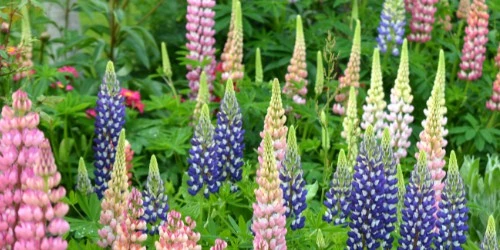
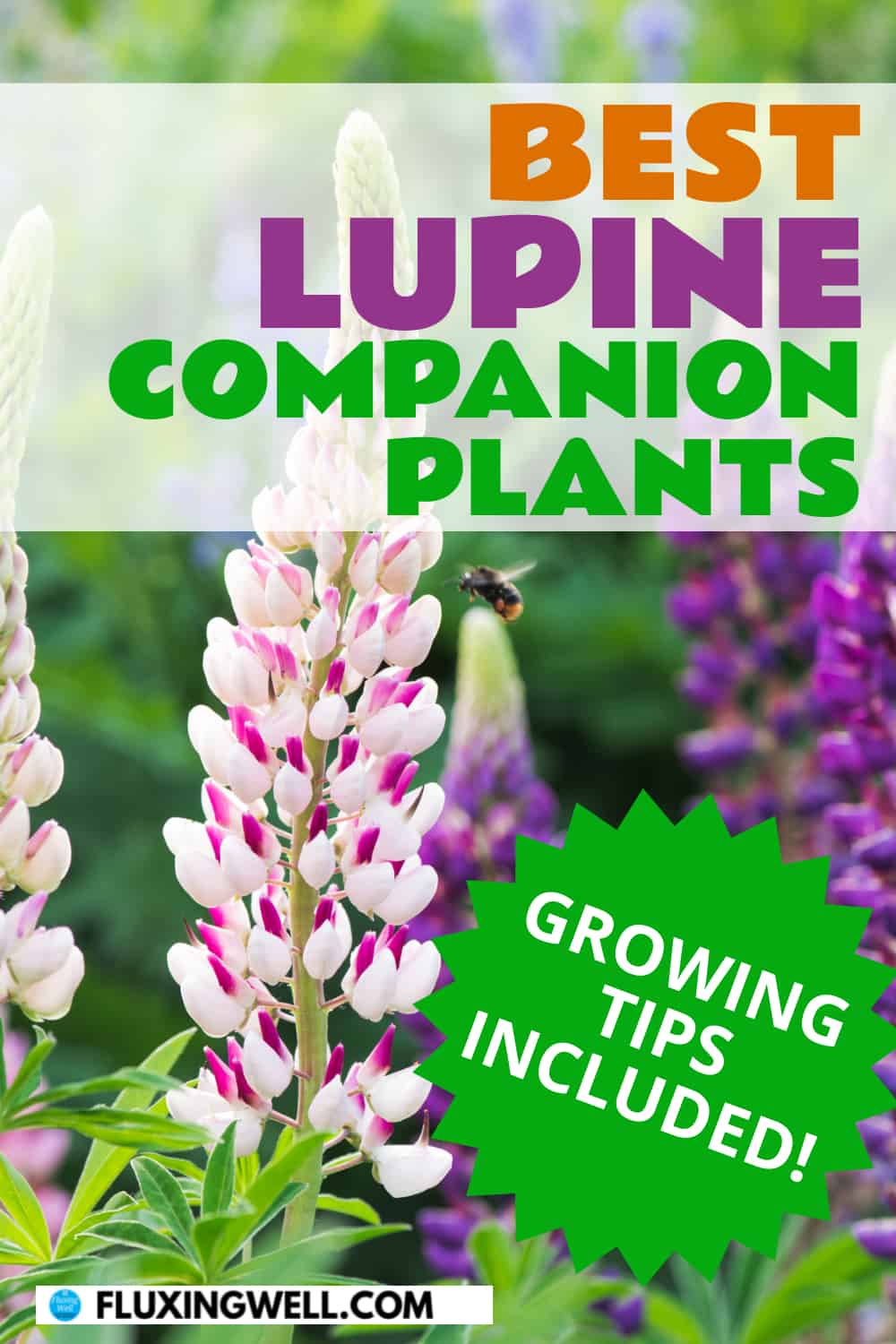

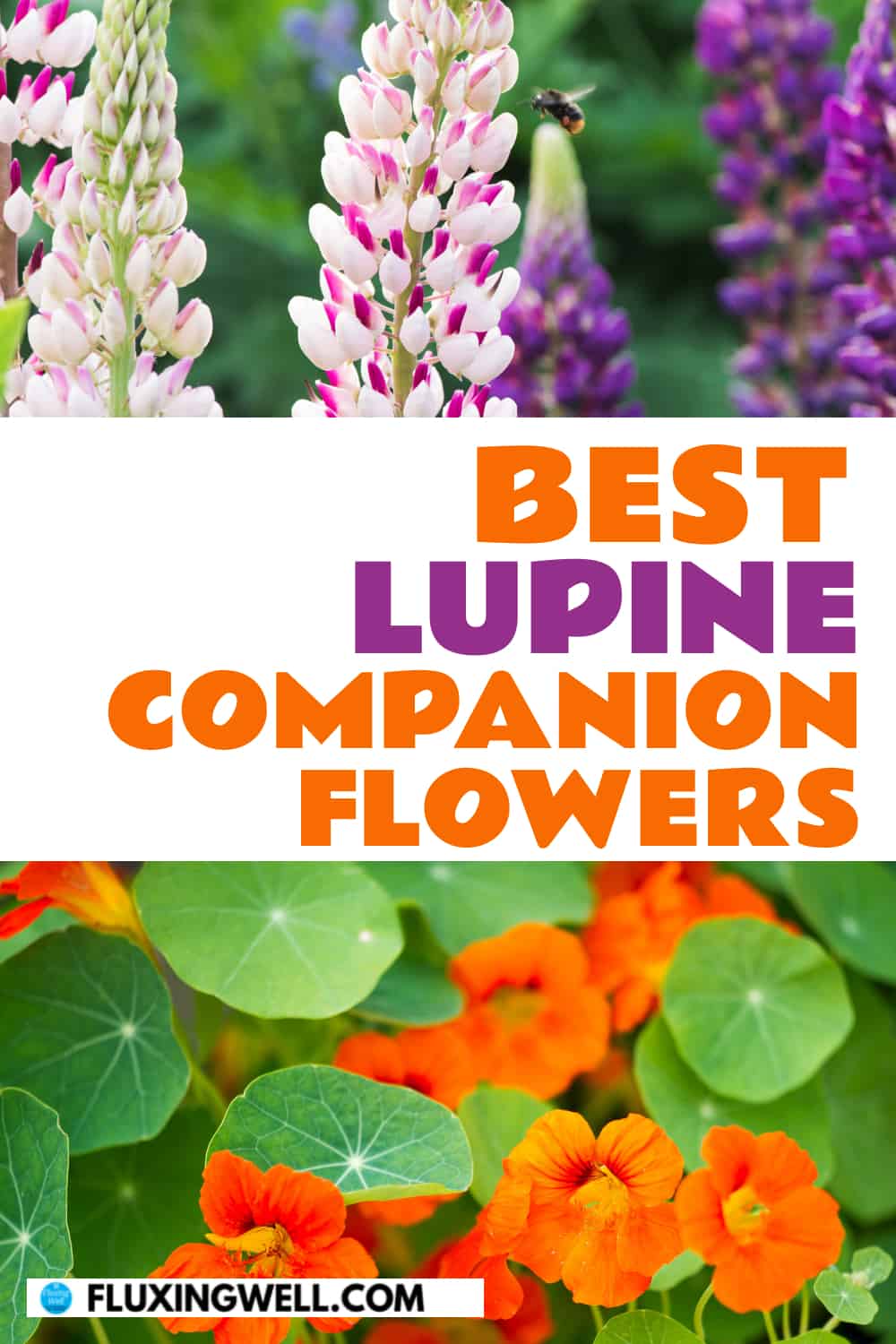
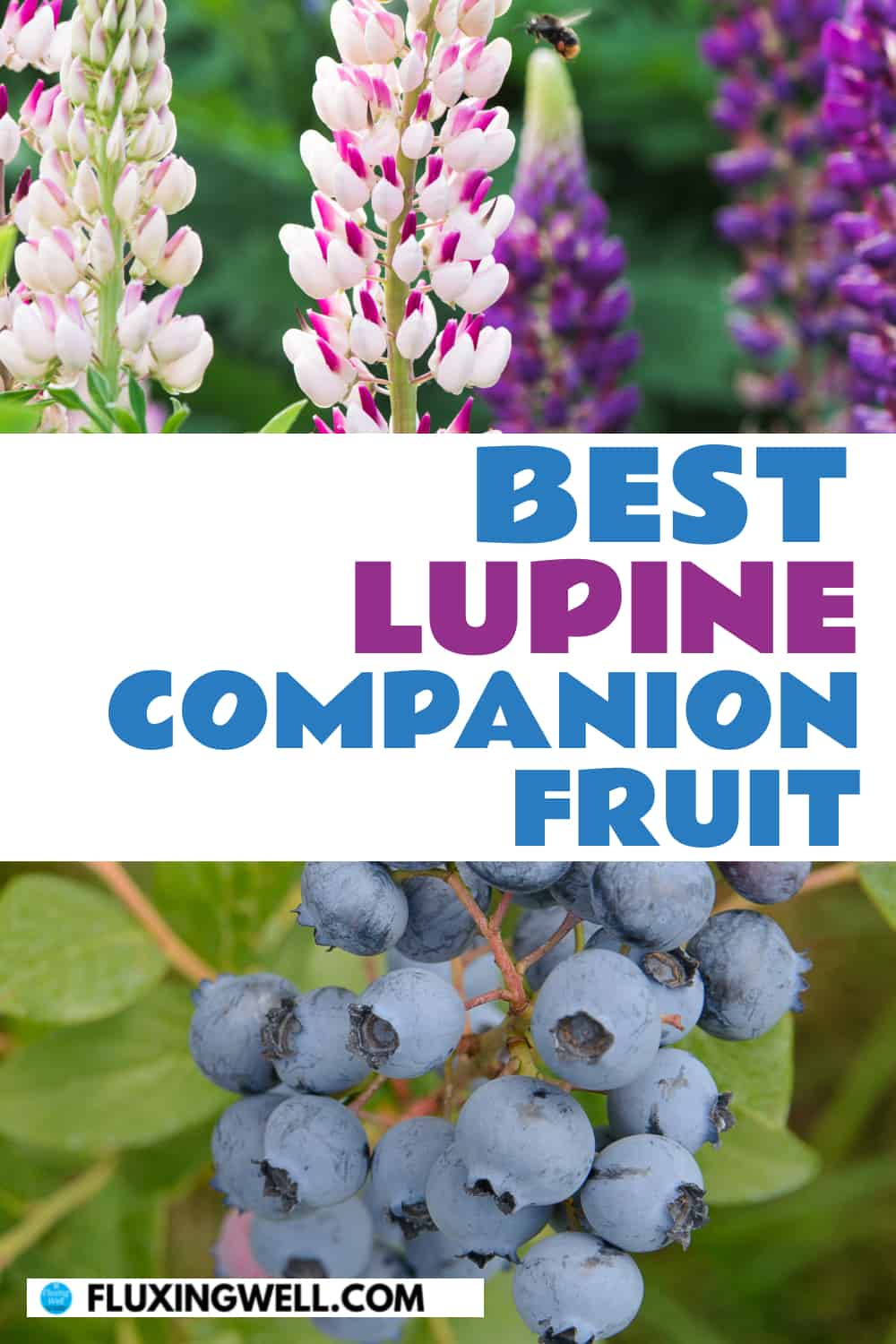
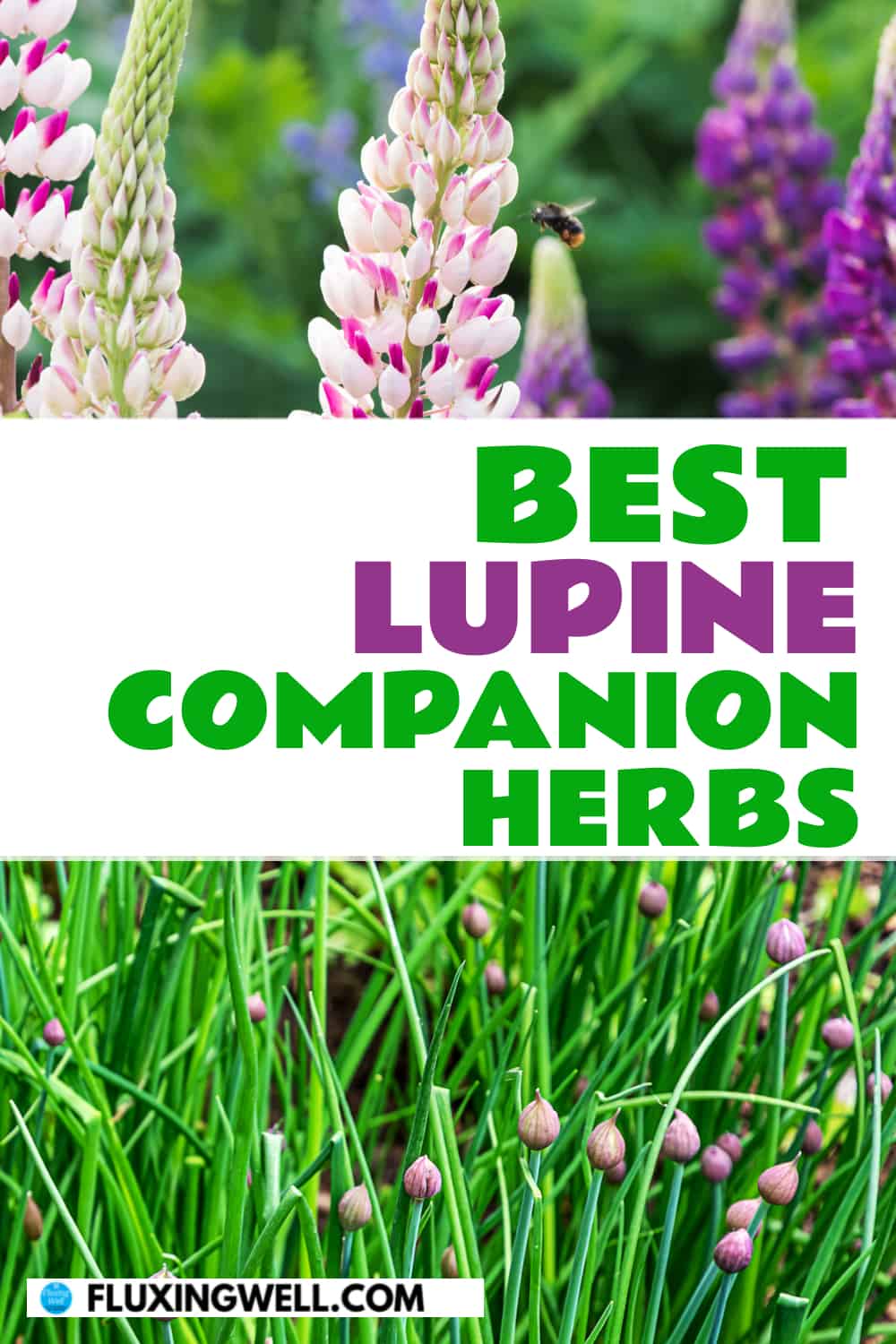

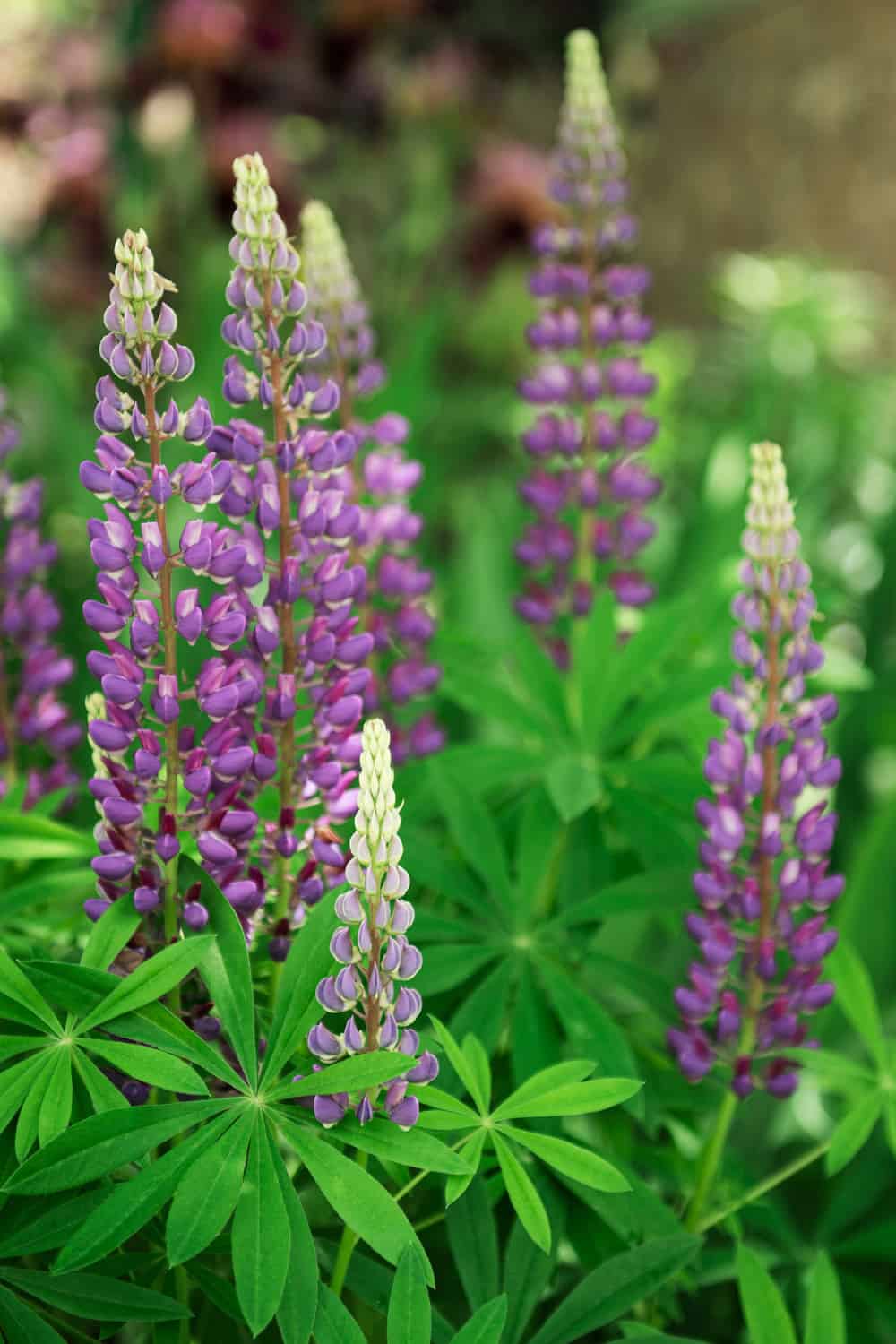


I think lupine flowers are so pretty. I need to get some. And I appreciate your comprehensive information on companion plants, always so helpful!
You are most welcome. I look forward to the lupine returning each year.
I really didn’t know much about lupine plants before this post. They really are gorgeous flowers and it’s very handy to know the best lupine companion plants both vegetables and flowers.
I hope you get to plant some lupines with great companion plants in your garden.
I love your gardening articles! So interesting and helpful to learn about the lupine companion plant and the ones to avoid. Thanks!
You are most welcome. I am happy to spread the word about lupines and their companion plants.
I love lupine. They grew at my former house and I miss them. Thank you for this post on companion plants and growing tips for lupines – it will help me to replant lupines.
Oh, I am happy you are going to replant lupines. They add such a nice touch of color to a garden.
I love the colors of lupine and hope to grow more of them this year. Thank you for the list of companion plants and growing tips.
Yes, the colors of lupine seem so tranquil and relaxing. I am glad you liked the post about companion plants for lupine. Happy gardening!